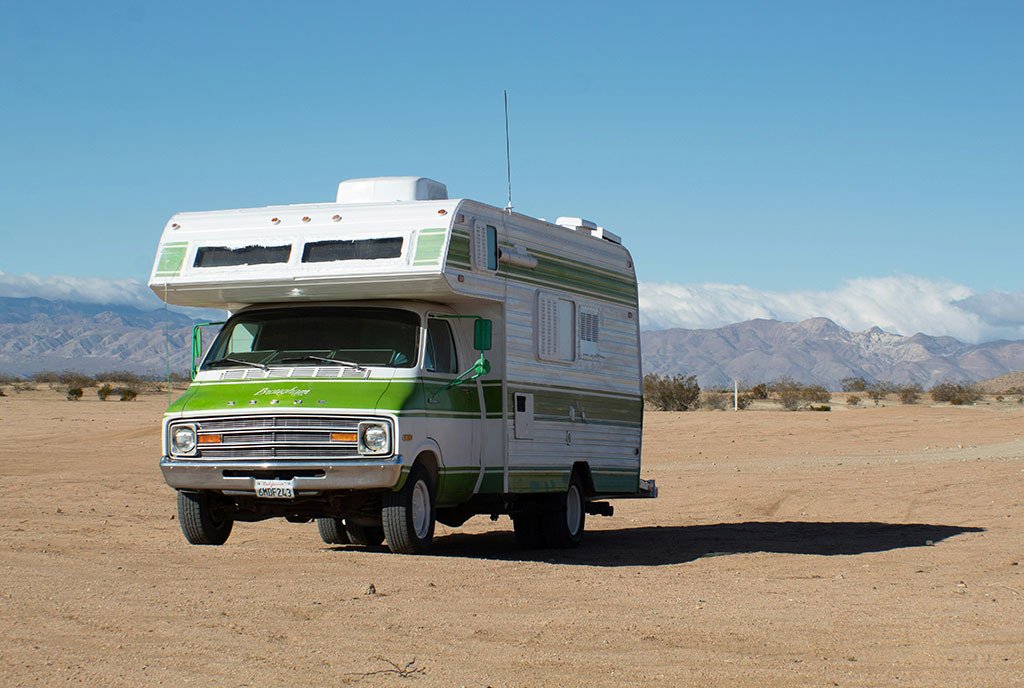
When Rene Agredano and Jim Nelson’s beloved dog Jerry was diagnosed with bone cancer in 2006, they decided to give him the best farewell road trip ever. They sold their Northern California marketing and graphics business, bought an RV, and moved around ever since, well beyond the two additional years Jerry had with them. This year marks their 17th year of living nearly full-time on the road.
Adventurers like Agredano and Nelson are far from alone. As of 2022, 3.1 million Americans live full-time in vans, RVs, and other motorized transportation converted into homes—a number that’s risen 63 percent in just the last couple of years. Many more Americans (11.2 million, to be exact) own an RV and spend at least some time on the road, a number that’s gone up 62 percent over the last two decades.
But that’s not all that’s increased. Extreme heat and cold events, wildfires, worsening air quality, flooding, and more have all been on the rise. So, how does the climate crisis impact those who live on the road?
Some Advantages, Greater Risk
As the CDC notes, “extreme summer heat is increasing in the United States, and climate projections indicate that extreme heat events will be more frequent and intense in coming decades.” Even as winters warm overall, blasts of extreme cold like the United States saw in early January will still occur. In California alone, human-caused climate change has contributed to a 320 percent increase in areas burned by wildfires between 1996 and 2021. Wildfires, in turn, have been worsening air quality for decades. Every coastline site measured by the EPA has seen increased flooding since the 1950s.
“It started becoming very apparent that keeping an eye on weather needs to be a priority.”
As Agredano noted on her Live, Work, Dream blog in 2021, “Now more than ever, RVers are running from insanely dangerous year-round forest fires, floods, and other natural disasters. Sure, we might have the advantage of being able to outrun them with all our possessions already packed, but there’s no guarantee we will make it out alive. Climate change and RVing puts us at greater risk of weather-related injury and death all year, wherever we go.”
In June 2010, for example, several hundred campers in Arkansas’s Albert Pike Recreation Area woke to rapidly rising water when the Little Missouri River rose over 20 feet in hours. Tragically, the waters swept entire RVs away, and ultimately, more than 20 campers, including eight children, died.
Essential Technology
Climate challenges aren’t keeping RVers off the road, but they are changing how people think about and prepare for travel, and where they go in the first place.
“In the Upper Midwest, we had our first tornado alert in Wisconsin. We had a flash flood evacuation in South Texas. It really brings home the fact that in an RV you are just not protected as well as you are in a house,” Agredano said. “It started becoming very apparent that keeping an eye on weather needs to be a priority.”
NPQ has reported on the increased dangers mobile home residents face during climate emergencies. With mobile home parks often restricted to vulnerable, less desirable land, like flood plains, residents are at greater risk than those in traditional homes. The same may be true of the land and locations where RVs are allowed to park.
Now Agredano and Nelson, even with satellite internet to alert them to emergencies or inclement weather, think twice about each place they decide to stay, ensuring they hunker down in locations with multiple exit routes. After a wildfire evacuation, they created go-bags packed with necessities like copies of important documents, money, pet supplies, medication, and extra underwear and socks that they could grab at a moment’s notice.
Michele DeVries and Mark Sprague, another husband-and-wife duo living on the road since 2017, have also started to pay more attention to where they stay. “In the summertime, we’re very aware of our surroundings in terms of wildfires—that’s the main thing we need to look out for,” DeVries said on a call from Baja California, México.
They use an app from the Fire, Weather & Avalanche Center to stay alert, but winter wind events keep DeVries up at night. RVs face increased danger from winds, which can topple them at high speeds. And wind makes many climate events worse, from spreading wildfires to dumping snow.
Sign up for our free newsletters
Subscribe to NPQ's newsletters to have our top stories delivered directly to your inbox.
By signing up, you agree to our privacy policy and terms of use, and to receive messages from NPQ and our partners.
“As humans…we think, ‘If it really gets that bad, I’ll hitch up my trailer and go.’”
“It’s really hard to predict and find a pattern for [wind],” DeVries said. “When it starts getting really windy and it seems like the gusts are just ramping up, it makes me nervous because that’s one thing we can’t as easily just drive away from.”
DeVries has found the Windy app from the World Meteorological Organization and her pilot husband’s sensibilities to be the most useful wind management tools. Technological advances like the apps DeVries and Sprague use are at the forefront of the ways that RVers can keep themselves safe by avoiding climate-induced extreme weather events in the first place.
Drivers of the Climate Crisis
David Titley was a rear admiral, oceanographer, and navigator of the US Navy. He also served as NOAA’s Chief Operating Officer before he retired. Soon after, he cofounded RV Weather Enterprises, a service that provides custom and accurate weather information and trip routing to RVers and road travelers. He started the program after experiencing the practical ways that weather impacts life on the road during a five-month, 10,000-mile cross-country Airstream odyssey with his wife.
“Oftentimes, I tell people your RV has wheels—use them. It’s not that you can’t go to the Gulf Coast or the Atlantic coast in August or September, but that if you do, you need to pay attention,” Titley said. “And don’t screw around. If it looks like a storm’s coming, just get out of there and get out of there early enough so that you’re not on the evening news with three million other people stuck on I-75.”
The transportation sector, of which RVs are a part, remains the largest source of carbon dioxide emissions in the United States.
“As humans,” he added, “we think, ‘If it really gets that bad, I’ll hitch up my trailer and go.’ But no, you won’t, because at that point the trees are coming down, the power lines are down, you can’t get gas anymore, and somebody else slid off the road, blocking it.”
Titley’s main advice echoed that of Agredano and DeVries—it comes down to awareness and preparedness. But if you do find yourself in an adverse weather event, his advice is this: “If you’re in a warning area, just get off the freeway. Get in any kind of building, even a rest area or a truck stop, it doesn’t matter—you’re safer in a building than in your RV.”
Some RVers turn to living in a vehicle specifically to deal with their fears about the mounting climate crisis: to use less energy and have a smaller carbon footprint. Life in a vehicle can be more sustainable than residing in a house, making do with less and living closer to the land. “This group are pioneers,” Sabrina Safrin, a professor at Rutgers Law School, told Bloomberg in an article about RVers concerned with climate change, “and they have a lot to teach us on mobile living—how to exist using significantly less energy and water, and how to still find community and meaning.”
Being outdoors and in nature is a major driver of RVing, but the irony is that both the manufacturing and the utilization of RVs are fueling the climate crisis impacting life on the road. Manufacturing RVs, even electric ones, requires emissions-intensive materials like plastic and fiberglass. The transportation sector, of which RVs are a part, remains the largest source of carbon dioxide emissions in the United States.
Realistically, Titley doesn’t suspect people will stop traveling because of climate change. His forecasts are geared toward making it safer for people to do what they will keep doing. “The weather is supercharged right now,” he said. “And it’s going to be that way for the rest of our lives.”











